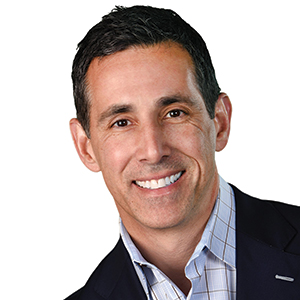We’re living in a highly stressed society, which makes for a highly stressed workplace. Employers are dealing with no-shows and resignations and are struggling to fill open positions. Costs are rising, alcohol and drug use is up, and families are reeling from the loss of loved ones. As a result, behavioral problems, and even violence, are becoming common in the workplace.
I believe that human resources will pave the way forward in addressing these behavioral problems. How? By working with entities that will bring mental health services, also known as behavioral health services, to the workplace.
This is the wave of the future. Services available on site will take the traditional Employee Assistance Program to the next level. It’s a harsh reality that this highly stressed society will be with us for years to come. Services to support employees’ well-being will become a highly valued necessary extra. And progressive organizations will not be scared of this evolution.
More and more companies are focusing on employee mental health. Programs like Starbucks’ mental health initiative, the Microsoft Cares program, Ernst & Young’s “r u okay?” program, Barclays “This Is Me” campaign and Johnson & Johnson Wellness 360 Program are precursors to the growth of company-sponsored mental health initiatives.
Schools have a long history of on-site behavioral health resources. So why can’t we bring this same approach to the business world? Teachers and school staff members receive behavioral science training to best deal with student issues. Wouldn’t this approach be beneficial to managers? And how about for small businesses? In addition to therapy, school behavioral health resources can include prevention programming, early identification of mental health challenges and treatment options. These services can help students build connections, develop social skills and leadership, become more self-aware and elevate academic achievement. Sounds like a good template for the workplace.
In 2021, the number of small businesses in the U.S. reached 32.5 million, making up 99.9 percent of U.S. businesses. Behavioral health will be a necessity to keep a happy and healthy workforce for the sizable small business labor force, which in 2021 hit 61.2 million, making up 46.8 percent of the total number of U.S. employees.
The challenge for small business owners is to provide opportunities — in a cost-effective way — to keep employees in a good headspace. This means opening up doors to resources they can easily access. The best option today is the Employee Assistance Program. These cost-effective tools are wonderful but require initiative on the employee’s part.
Bringing services into the workplace makes accessing help that much easier. Honestly, no business owner should ever assume that every employee has a strong support system at home. Often employees are in situations where there is no family support or there are financial issues, so you need to make it easy for them. With the advent of behavioral health services right-sized for workplaces of all sizes, it won’t be difficult to manage.
We are just in the beginning stages of the greater societal conversation shining a light on mental health. Our approach in the business world is going to necessarily evolve. Those that don’t bring behavioral health resources expertise into their workplace will be at a disadvantage.
Work is such a big part of every person’s life. Employees want to come to work and feel safe and feel heard. And there’s help on the horizon. The formation of behavioral health services specifically for the workplace is a wave that’s coming, for businesses of all sizes. ●
Mark D’Agostino is president of ConnectedHR


